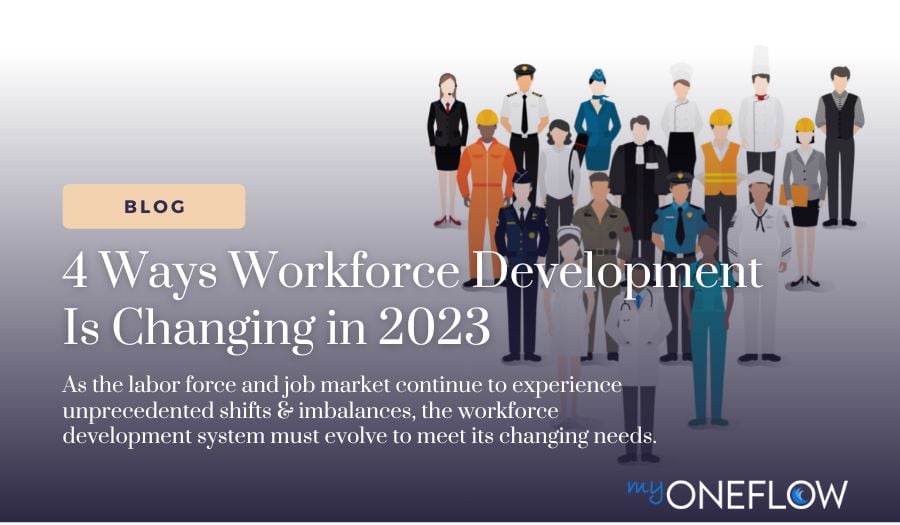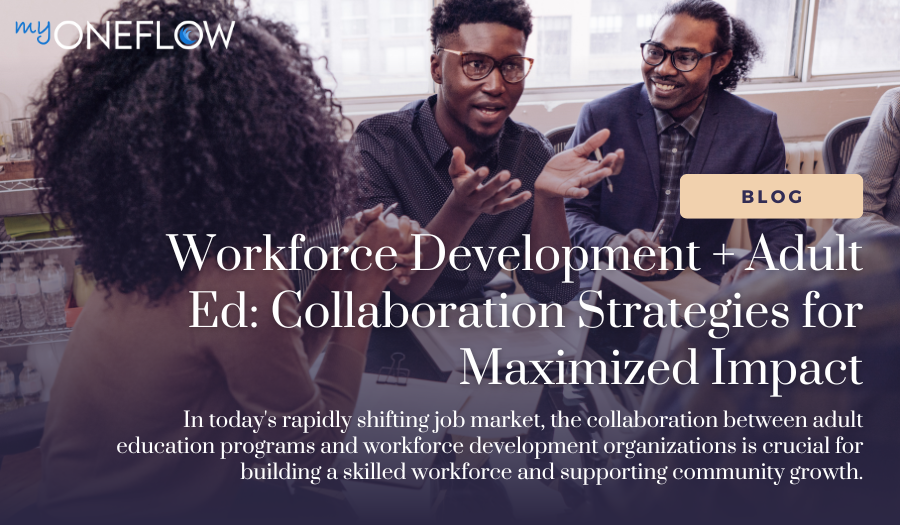How to Actually Track WIOA Co-Enrollments: Using Better Data to Drive Workforce Equity
The Workforce Innovation and Opportunity Act (WIOA) is rooted in a bold ambition: “to strengthen the United States workforce development system...

The U.S. workforce has experienced rapid change since the onset of the pandemic in 2020. Between the transition to virtual/hybrid work, the immense strain put on front-line workers, the growing skills gap and labor shortage, and the “Great Resignation,” worker and employer needs are very different than they were in 2019. As workforce development organizations and stakeholders evolve to meet these new needs, there are several emerging themes that we're likely to see in the year ahead.
The Workforce Investment Act of 1998 largely positioned employment services around job matching – pairing unemployed individuals with a job for which they were already qualified. WIA’s successor, WIOA, was revolutionary in its goal to create workforce development networks that connected career centers, adult ed providers, training providers, NGOs, and other community stakeholders. However, implementing this goal has proven challenging, and many organizations remain siloed.
As we continue to move through the economic shock brought on by the pandemic, workforce development organizations are realizing it’s critical to put more emphasis on providing holistic employment services rather than job matching alone. This means taking the time to understand the client’s story and not just their immediate employment needs. By assessing potential barriers to employment, such as limited English proficiency, lack of transportation, or poor digital literacy, case managers can connect clients with supportive resources and referral partners that empower them to make meaningful advancements along their career path.
A Bachelor’s degree used to be the gold standard in education, with many employers requiring it as a nonnegotiable prerequisite for employment. Enrollment in higher education has been on the decline for a decade, but until the pandemic, there was a consistent increase in job postings with degree requirements. Ironically, research from Harvard Business School found very little difference in required skills between middle-skill job postings that requested a degree and those that didn’t. These arbitrary requirements immediately filter out roughly two-thirds of the labor force.
This trend is starting to shift thanks to the ongoing labor shortage and skills gap crisis. As fewer jobs include a degree requirement, workforce development organizations are focusing on helping clients develop high-quality career pathways instead. While a career pathway may include a degree or certificate, its broader focus is to provide a clear and attainable career progression that offers a family-sustaining wage and growth potential.
One-Stop Career Centers were established under the Workforce Investment Act and are nearly 25 years old. While the concept is no less relevant today, the execution needs serious updates for the modern workforce. A brick-and-mortar location will always be essential to ensuring equitable access to workforce development services, particularly for individuals with poor digital literacy. However, with modern technology, career centers can expand far beyond the scope of four walls.
Many state workforce organizations are making tech a budget priority by investing in WIOA case management software that helps make the most of limited staff resources and available funding. 2023 will likely see an expansion of this trend, as the right software can help career centers stay connected to their referral network, streamline case management, automate service delivery, and easily manage reporting and compliance requirements.
Sector partnerships address labor shortages by convening local workforce organizations, training and education providers, and employers within a specific industry. As workforce organizations strive for improved collaboration, there is an increased commitment to developing dedicated industry sector partnerships within communities. While the current WIOA bill allows funds to be used for sector partnerships, there is no specific investment in them.
However, if passed by the House, the current WIOA reauthorization proposal will codify a new SECTOR (Sectoral Employment Through Career Training for Occupational Readiness) Program and allocate specific funding to strengthen partnerships between employers and career training providers. There is also a significant push for an increased emphasis on sector partnerships from leading industry advocates, such as the National Skills Coalition.
myOneFlow is the no-code/low-code software platform of choice for WIOA service providers looking to modernize their operations to meet the needs of today’s workforce development system. Contact our sales team today to discuss your unique organization. To stay informed about more WIOA-related news and updates, subscribe to our newsletter!
Image by rawpixel.com on Freepik

The Workforce Innovation and Opportunity Act (WIOA) is rooted in a bold ambition: “to strengthen the United States workforce development system...

Effective workforce systems are rooted in collaboration. Under the Workforce Innovation and Opportunity Act (WIOA), workforce development agencies...

The Workforce Innovation and Opportunity Act (WIOA) was signed into law in 2014 to replace its predecessor, the Workforce Investment Act (WIA). The...